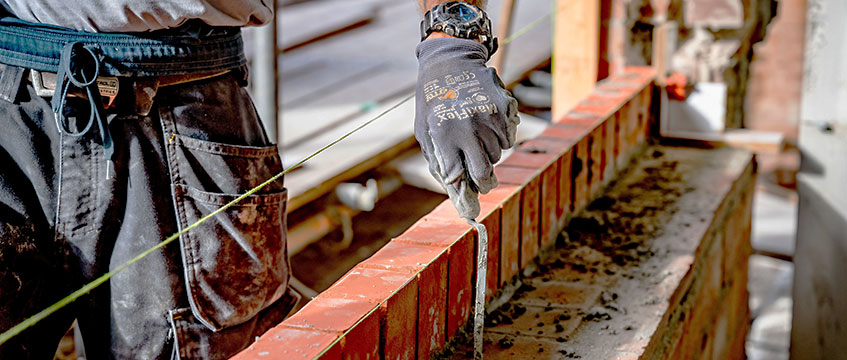Plans for the future of Rolls-Royce’sHillington site in Glasgow have been shrouded in secrecy. At the start of 2002, the engine manufacturer announced it was vacating the site it has occupied since the second world war. Almost four years later, Midland developer St Modwen is set to buy the 31-acre site in its first move north of the border.
The deal will not complete until Rolls-Royce vacates the site in January and the company has issued a gagging order over the sale, leaving many agents unwilling or unable to comment. Yet speculation surrounds the transaction.
It was widely believed that Caledonian Land, the Scottish arm of MEPC, wasnegotiating to buy the site. But after 18 months of talks, the deal was off. Sources close to the deal say that St Modwen paid “a little in excess” of £6m for the site, which occupies most of the west side of Hillington Park. The actual sale figure represents a “considerable discount” on comparative yields obtained for a well-let industrial site, said the source, but the site itself in income-stream terms should be high yielding.
But will St Modwen refurbish the 800,000 sq ft of units, or face the contamination issues associated with a site that has been connected with manufacturing for more than 50 years and redevelop?
Now, breaking the veil of silence, the
company has offered the first glimpse of its plans for the land. St Modwen seems keen to capitalise on the site’s capacity to provide a healthy income. First on its hit list are Sites 2 and 3, outside the main cluster of sheds, to the south of the site, equating to just over 5 acres of development land. Site 2 houses sheds ranging up to 17,000 sq ft, which St Modwen’s chairman and chief executive, Anthony Glossop, says are unsuitable for reuse.
Rolling programme
Regarding timescales, St Modwen is bullish in the extreme. The company will apply for planning permission in February with a view to being on site in the second quarter. Glossop says the first new sheds will be standing on the site by the end of 2006.
He intends to build speculatively despite the general malaise in the Scottish industrial market (see box, p109). “We’ll build one unit and keep the rest on hold,” he says. “Once the first is let, we will build on a rolling programme, so we have a range of sizes. If the market is as good as I think it is, we will dispose of a small unit in the construction phase.”
However, Glossop intends to establish an income stream more quickly. The remaining 645,000 sq ft of sheds on the main site will be refurbished by Easter next year.
St Modwen is keen to retain the original sizes of the sheds, most of which are around the 130,000 sq ft mark, rather than subdivide them into more manageable chunks. However, Glossop concedes: “I realise that industrial occupiers with requirements for this size don’t grow on trees, so we will divide them up if needs be.”
He says the refurbished units will be pitched at rental levels around £2 per sq ft, and aimed at occupiers looking for cheap storage. The company wants to attract a mix of distributors, manufacturers and storage, as well as small office occupiers and some leisure operators.
This will pitch St Modwen head to head with similar units at Westway Park, further west along the M8, next to Glasgow Airport.
Local agents seem to think there is room for both. “It will be competition for Westway,” says Malcolm Pearson, head of GVA Grimley’s industrial team. He adds: “I’d be really sceptical about building big sheds in the next five years, but there is real potential for very large cheap storage.”
For the new-build units, Glossop is looking for rents double those on the refurbished units. This could be a tough trick to pull off. Occupiers willing to pay £4 per sq ft for the best accommodation remain rare in the Scottish market. Glossop remains unfazed. “I look at buildings from a users’ point of view,” he says. “Many look at it from a property point of view, and tend to overdo the office part of the schemes. We won’t be doing that. We will have property that people want. We’ll have good product with decent yard sizes in a good location.”
This means there will be none or little office accommodation in the refurbished stock, although Glossop concedes the company will add a limited amount if an occupier demands it. On the new-builds, St Modwen will provide between 15,000 sq ft and 20,000 sq ft of offices. “We can always add more if we need to,” says Glossop.
This will not be the end of work at the site. “St Modwen is used to managing secondhand space, but I believe there is greater value to be had at Hillington,” comments Glossop, who wants to see further redevelopment. This raises questions over contamination.
Market sources say Caledonian Land had been interested in redeveloping the whole site but walked away from the sale after being unable make the cost of remediation stack up against the multimillion-pound price tag.
Glossop admits the land is contaminated, but says it will only become a problem for the company if it tackles redevelopment of all the buildings at the same time. “Over time,” he says, “we can cope with it.”
|
|
|
Availability 2.8m sq ft, 74% built before 1990 Take-up static on 2004 levels at 920,000 sq ft – in line with the 10-year average Prime rents Tade counter units £8 per sq ft, up £1 per sq ft on last year General industrial £5.75 per sq ft Glasgow Airport £6.50 per sq ft Pipeline A total 122,000 sq ft of speculative development in phase 2 Gateway Glasgow and Trade Park, London Road. This represents the only speculative development under way in Scotland. |
|
Sources: King Sturge and Knight Frank |










